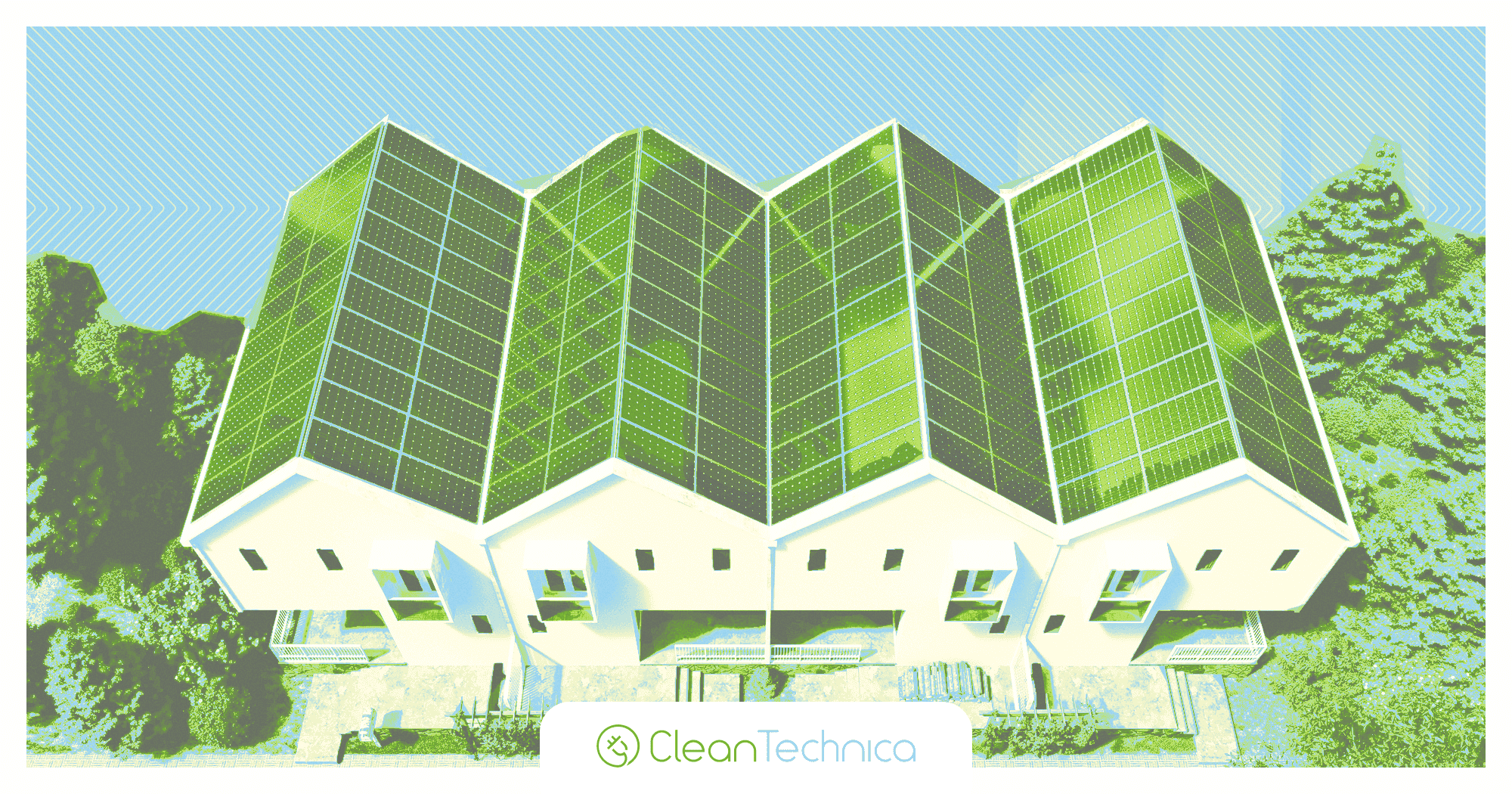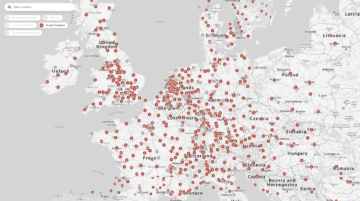
California’s rooftop solar and storage market is changing, and the industry is learning to operate in this new reality.
California has been America’s top solar market for over a decade, installing more solar capacity than any state every year until Texas took over in 2021. While California reclaimed the number one ranking in 2022 and installations look strong in 2023, the shift in 2021 may be a preview of what is to come.
In late 2022, after years of debate, the California Public Utilities Commission (CPUC) unanimously approved a new way to compensate rooftop solar customers for the excess energy they generate. This decision moves the state from retail rate “net metering” to a new “net billing” structure that cuts the value of rooftop solar credits by about 75%.
The fear among solar industry leaders is that this shift was too drastic, and importantly, too abrupt.
Rooftop solar installation forecasts in California have since cratered.
According to forecasts from Wood Mackenzie, California’s residential solar market will see a 40% decline in 2024, and the state’s commercial rooftop sector will decline by 25% from 2024 to 2025. After decades of California leading annual solar installations in the United States, Texas will take the top spot again in 2024-2028.
The question now is simple. How does California’s rooftop solar and storage industry adapt and thrive in this new policy reality, and what does the future hold?
We know for certain that California’s solar industry is not going away. The sector is a cornerstone of the state’s economy, employing over 78,000 people and driving nearly $100 billion of private capital into communities statewide. Solar provides nearly 30% of California’s electricity needs, and the state has passed laws committing itself to deploy more solar projects of all sizes to meet its ambitious climate goals.
The Solar Energy Industries Association (SEIA) and its partners continue to advocate for a policy environment that better allows solar and storage businesses to operate while serving the people of California’s unquestionable demand for clean energy. Rooftop solar and storage is a vital source of resilience that provides reliable power for homes and critical infrastructure. It is urgent that state policies empower Californians to choose this technology in the face of worsening climate impacts and high electricity costs.
When California state leaders cut compensation rates for rooftop solar, they did so with the intention of encouraging residential battery storage installations that would export electricity during times of stress on the grid.
Despite this clear intention, late last year the CPUC approved new rules that prevent residential storage customers from using their excess energy credits to offset utility delivery charges. The change upends the already precarious balance that was struck during the Net Billing Tariff proceeding and disincentivizes solar and storage customers from exporting energy to the grid because they will not receive full compensation for those exports. The California solar and storage industry was already struggling after the move to net billing, and this additional policy adds a level of complexity that will be difficult to overcome.
This string of recent CPUC decisions is already causing significant job losses and business closures, and it is putting California’s clean energy progress at risk as climate impacts continue to increase.
There is still time for leaders to reverse course, and that time is now.
In addition to adjusting these damaging policy decisions, state leaders ought to encourage more solar and storage adoption in the near- and long-term if California is going to meet its 2030 clean energy goals.
SEIA is working to address these issues, including participating in the state’s avoided cost calculator proceeding to make sure it properly values and compensates solar and storage customers for the power they export to the grid. SEIA also filed for a rehearing to allow customers to use excess energy generation credits to offset utility delivery charges and return to the Net Billing Tariff previously agreed to in 2022.
Policymakers should act to reduce interconnection delays, expand energy storage incentives, and support incentives for low- and middle-income households to access solar and storage.
SEIA is also urging state regulators to reject utility proposals to implement significant new monthly fixed charges on all household electric bills.
Put simply, state regulators have taken a hammer to Californians ability to install solar and storage in recent months. These decisions are discouraging families and businesses from deploying the clean energy needed to reduce stress on the grid and address climate change.
California’s solar and storage industry can learn how to operate in this new policy reality, and it will, but only with support from state leaders. SEIA is calling on policymakers to mitigate the negative effects of these damaging policies before California loses more jobs and climate impacts worsen.
California’s clean energy future depends on it.
Courtesy of SEIA.
Have a tip for CleanTechnica? Want to advertise? Want to suggest a guest for our CleanTech Talk podcast? Contact us here.
Latest CleanTechnica TV Video
[embedded content]I don't like paywalls. You don't like paywalls. Who likes paywalls? Here at CleanTechnica, we implemented a limited paywall for a while, but it always felt wrong — and it was always tough to decide what we should put behind there. In theory, your most exclusive and best content goes behind a paywall. But then fewer people read it!! So, we've decided to completely nix paywalls here at CleanTechnica. But...
Thank you!
Advertisement
CleanTechnica uses affiliate links. See our policy here.
- SEO Powered Content & PR Distribution. Get Amplified Today.
- PlatoData.Network Vertical Generative Ai. Empower Yourself. Access Here.
- PlatoAiStream. Web3 Intelligence. Knowledge Amplified. Access Here.
- PlatoESG. Carbon, CleanTech, Energy, Environment, Solar, Waste Management. Access Here.
- PlatoHealth. Biotech and Clinical Trials Intelligence. Access Here.
- Source: https://cleantechnica.com/2024/02/01/theres-still-time-for-california-regulators-to-stop-killing-the-california-solar-storage-industry/
- :has
- :is
- :not
- $UP
- 000
- 15%
- 2021
- 2022
- 2023
- 2024
- 2025
- 2030
- 36
- a
- ability
- access
- Act
- adapt
- addition
- Additional
- address
- Adds
- adjusting
- Adoption
- Advertise
- advocate
- Affiliate
- After
- again
- agreed
- All
- allow
- allows
- already
- also
- always
- ambitious
- among
- and
- annual
- any
- approved
- ARE
- AS
- Association
- At
- avoided
- away
- Balance
- battery
- battery storage
- BE
- because
- been
- before
- behind
- BEST
- Better
- billing
- Billion
- Bills
- Bit
- business
- businesses
- but
- by
- california
- calling
- CAN
- Capacity
- capital
- causing
- certain
- change
- changing
- charges
- chip
- Choose
- clean
- clean energy
- cleantech
- Cleantech Talk
- clear
- Climate
- come
- commercial
- commission
- committing
- Communities
- Companies
- Compensation
- completely
- complexity
- content
- continue
- cornerstone
- Cost
- Costs
- course
- Credits
- critical
- Critical Infrastructure
- Customers
- Cut
- cuts
- damaging
- debate
- decade
- decades
- decide
- decided
- decision
- decisions
- Decline
- delays
- delivery
- Demand
- depends
- deploy
- deploying
- DID
- difficult
- does
- don
- driving
- during
- economy
- effects
- electricity
- embedded
- employing
- empower
- encourage
- encouraging
- energy
- Environment
- Every
- excess
- Exclusive
- Expand
- export
- exports
- Face
- families
- fear
- felt
- fewer
- filed
- fixed
- For
- forecasts
- from
- full
- future
- generate
- generation
- Goals
- Goes
- going
- Grid
- Guest
- hammer
- Have
- help
- here
- High
- hold
- Homes
- household
- households
- How
- How To
- HTTPS
- if
- Impacts
- implement
- implemented
- importantly
- in
- Incentives
- Including
- Increase
- industries
- industry
- Infrastructure
- install
- installation
- installing
- Intention
- interconnection
- into
- issues
- IT
- ITS
- itself
- Job
- Jobs
- killing
- Know
- Last
- Last Year
- Late
- Laws
- leaders
- leading
- LEARN
- learning
- Level
- like
- likes
- Limited
- links
- long-term
- Look
- Loses
- losses
- make
- Market
- May..
- Media
- Meet
- Mitigate
- monthly
- months
- more
- most
- move
- moves
- nearly
- Need
- needed
- negative
- net
- New
- new policy
- news
- now
- number
- of
- offset
- on
- ONE
- only
- operate
- or
- Other
- our
- over
- Overcome
- participating
- partners
- passed
- People
- plato
- Plato Data Intelligence
- PlatoData
- player
- podcast
- policies
- policy
- policymakers
- power
- prevent
- Preview
- previously
- private
- Progress
- projects
- properly
- Proposals
- provides
- public
- publish
- put
- Putting
- question
- Ranking
- Rate
- Rates
- Read
- Reader
- Reality
- receive
- recent
- reduce
- Regulators
- reliable
- residential
- resilience
- retail
- return
- reverse
- Risk
- rules
- s
- sector
- see
- serving
- shift
- should
- significant
- Simple
- simply
- sizes
- So
- solar
- solar energy
- Source
- Spot
- State
- States
- Still
- Stop
- storage
- Stories
- stress
- String
- strong
- structure
- Struggling
- suggest
- support
- sure
- T
- Take
- taken
- Talk
- team
- Technology
- texas
- than
- that
- The
- The State
- their
- then
- theory
- There.
- These
- they
- this
- those
- Thrive
- time
- times
- tip
- to
- too
- took
- top
- tough
- tv
- unanimously
- United
- United States
- until
- Updates
- urgent
- urging
- us
- use
- uses
- using
- utilities
- utility
- value
- Values
- Ve
- Video
- vital
- want
- was
- Way..
- we
- What
- What is
- while
- WHO
- will
- with
- wood
- working
- worsen
- would
- write
- Wrong
- year
- years
- you
- Your
- youtube
- zephyrnet



